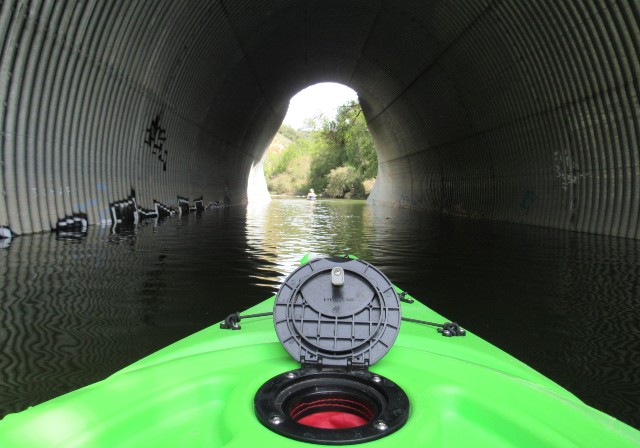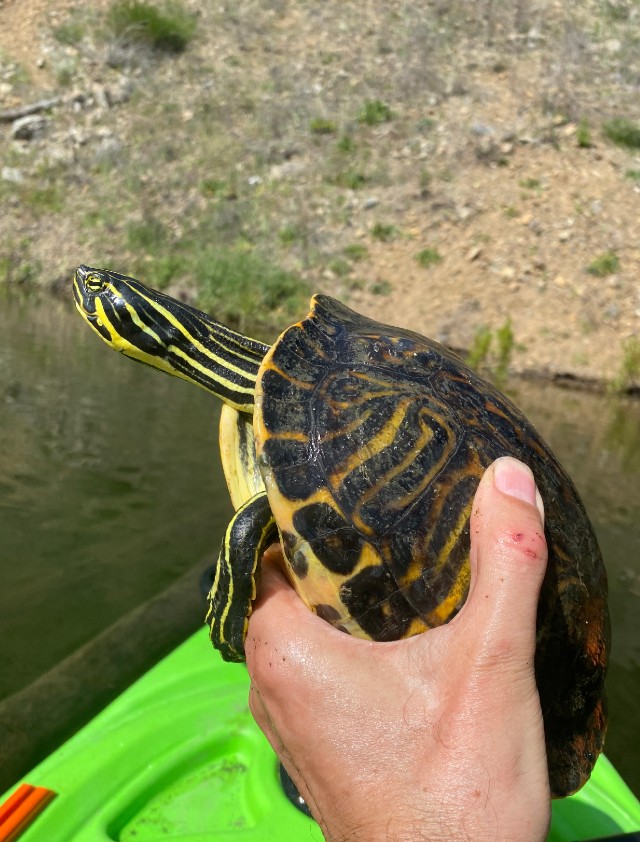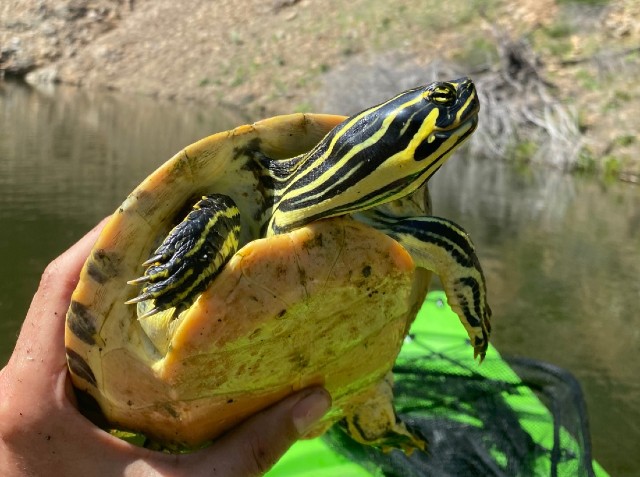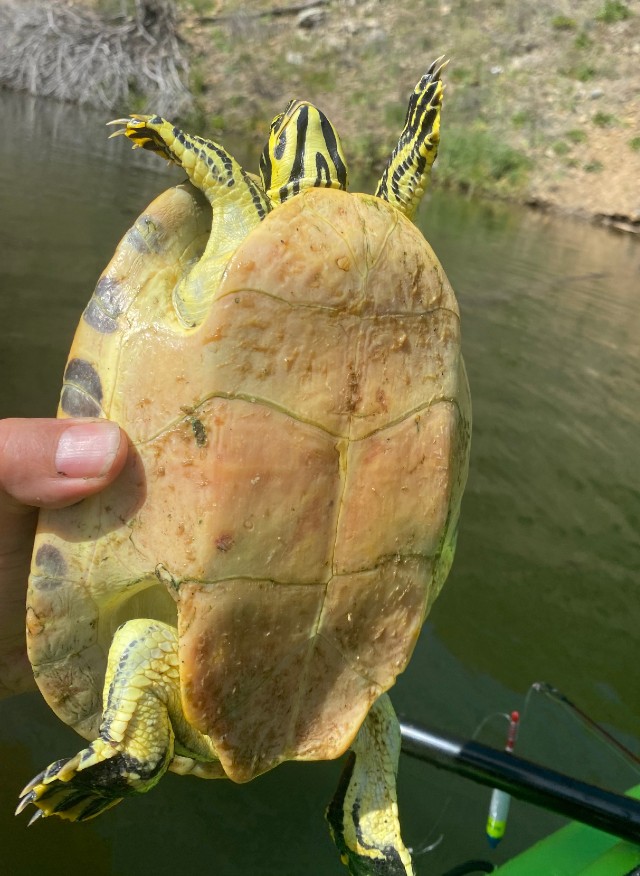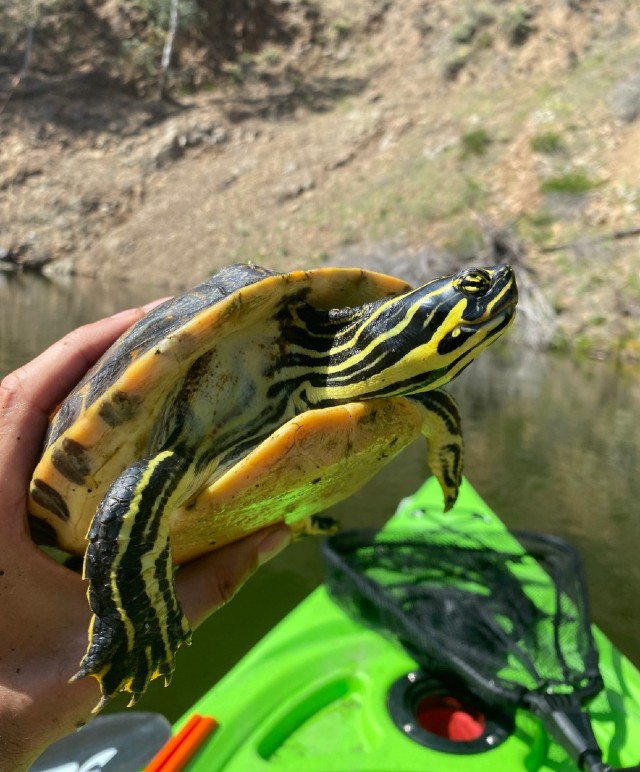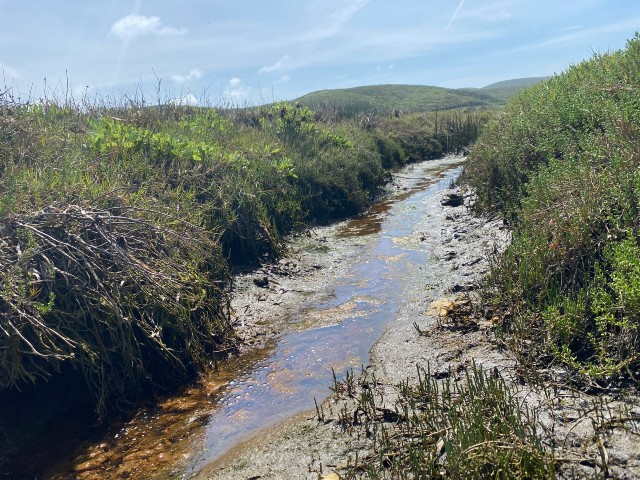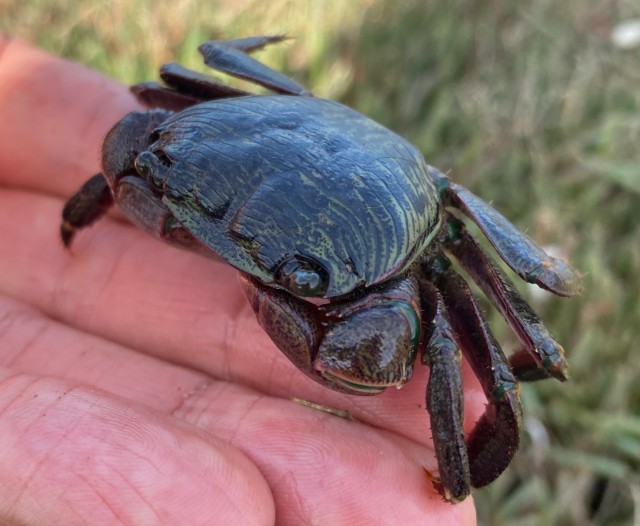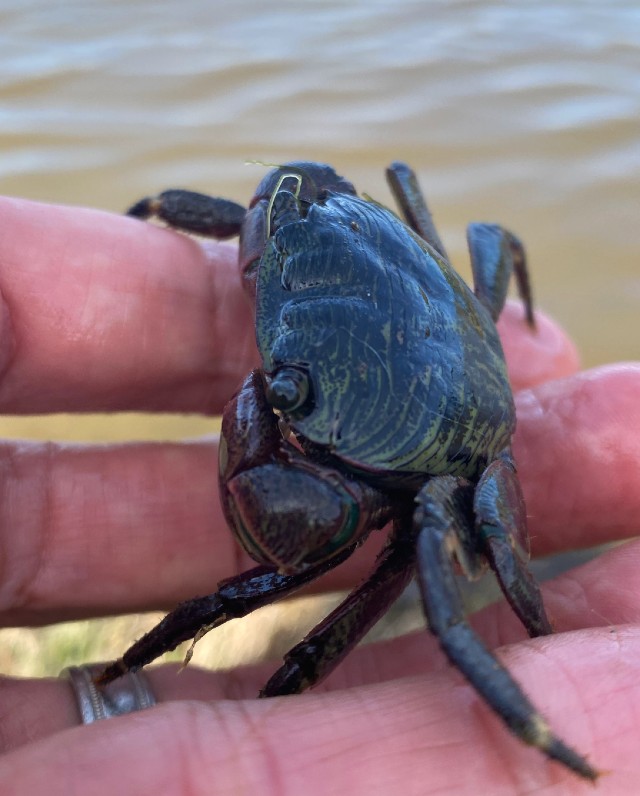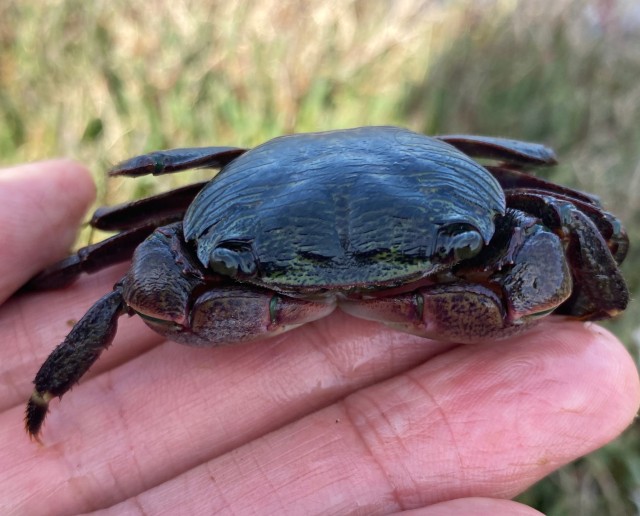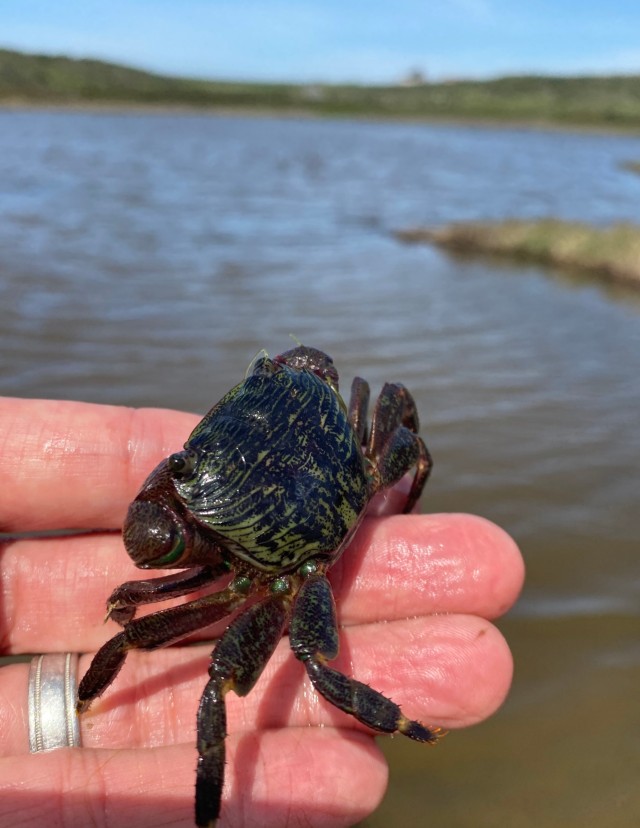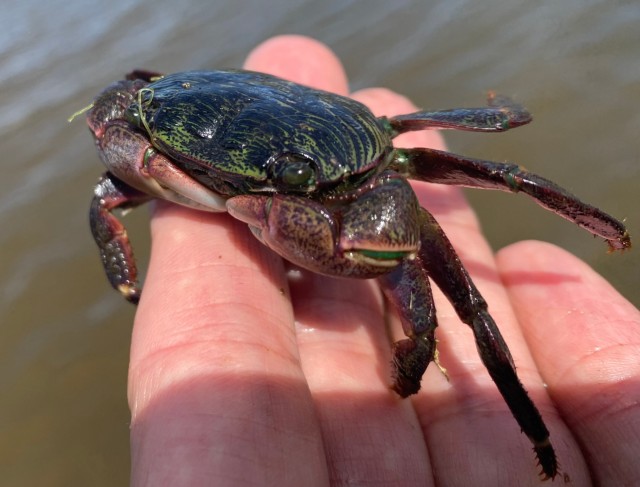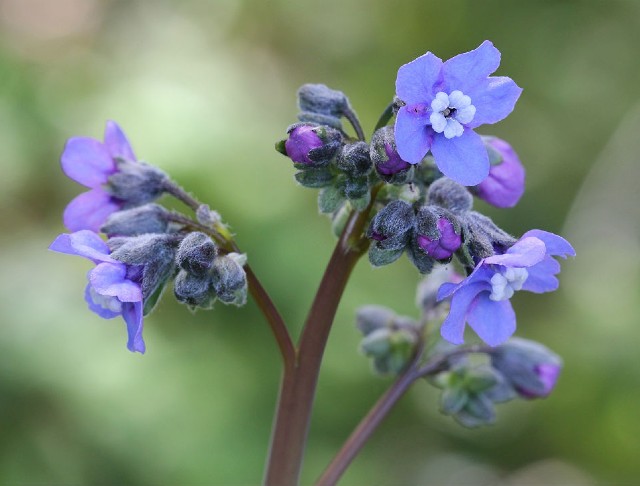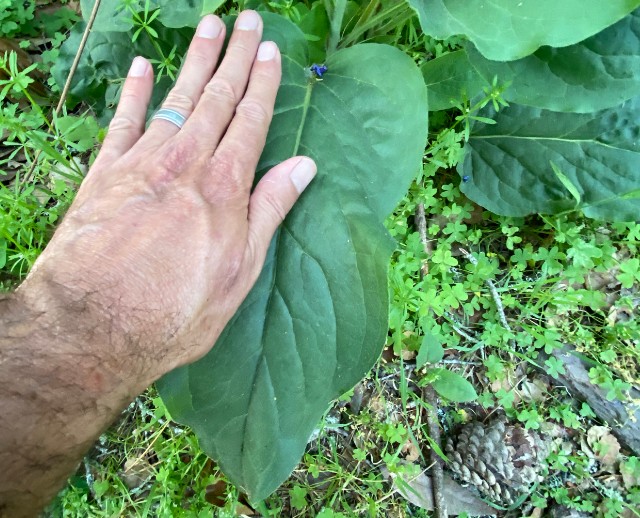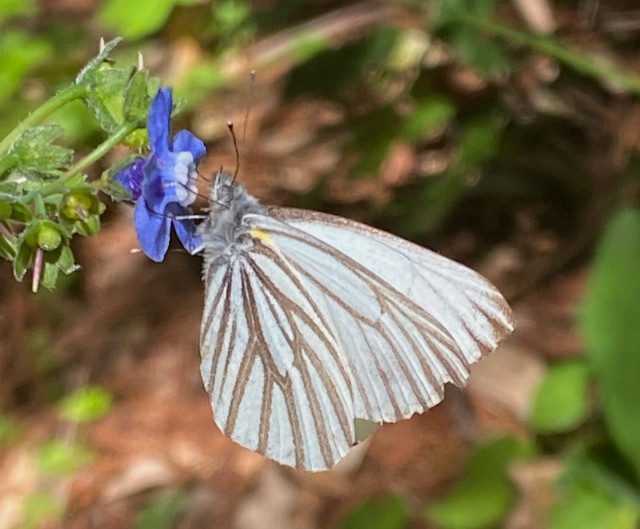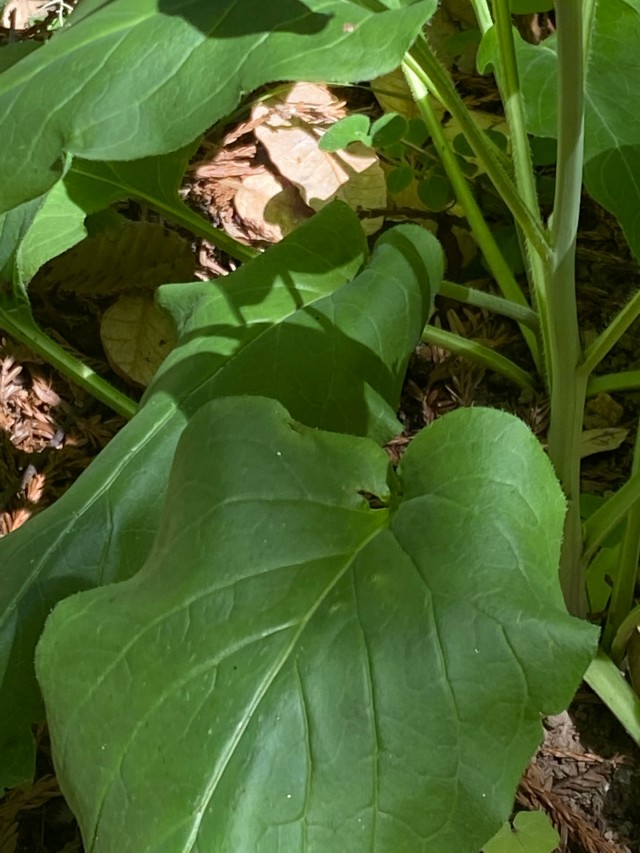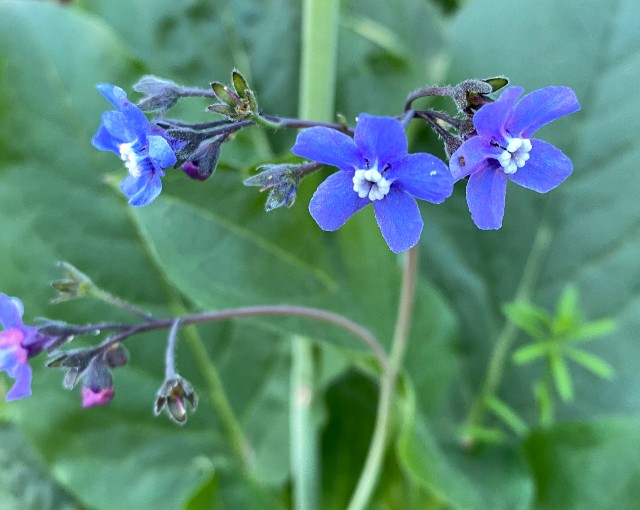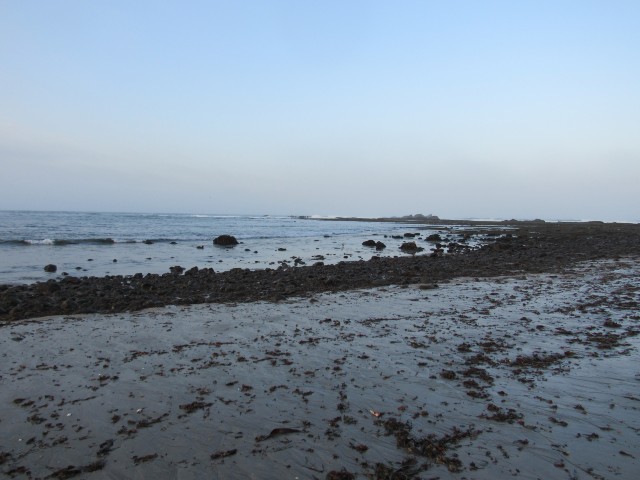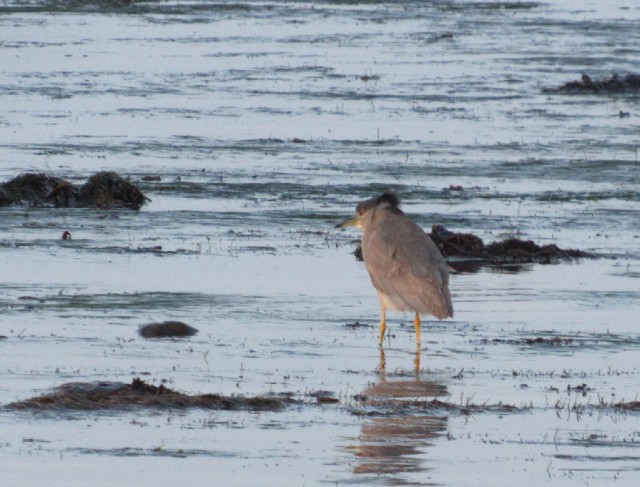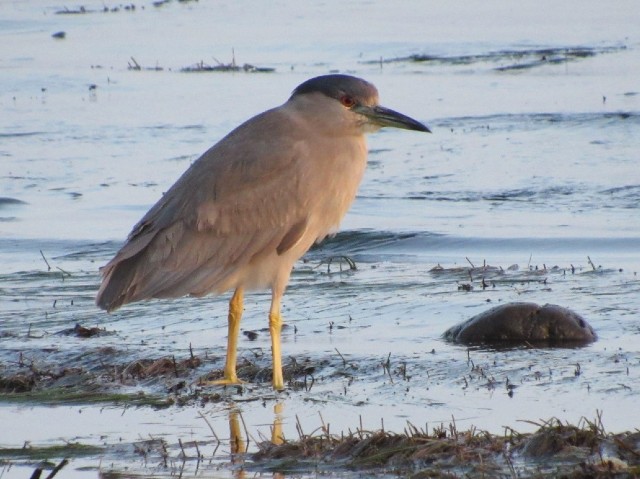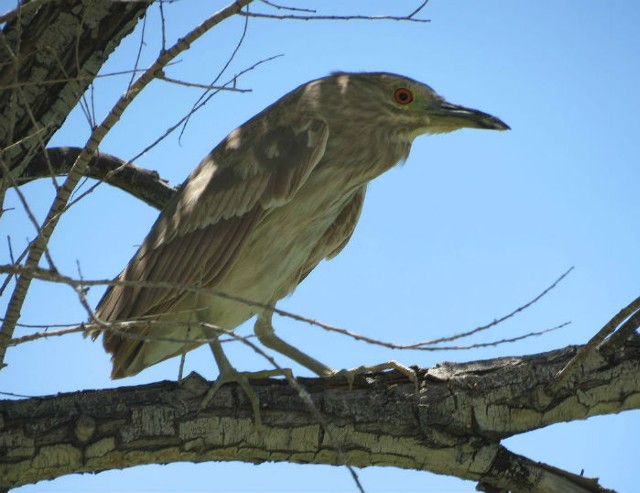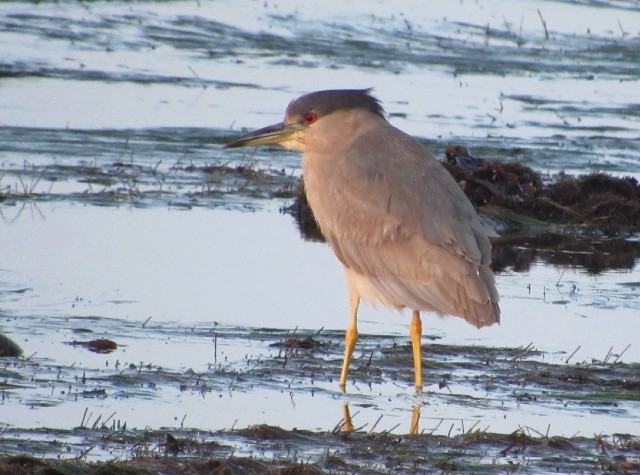While kayaking in California I caught this very cool (but non-native) reptile that in its natural range is found throughout the Florida peninsula.
Peninsula Cooters live primarily in habitats such as floodplain swamps, basin marshes and occasionally tidal marshes. Areas with slow moving or stagnant waterways with abundant basking sites, submerged vegetation and sandy bottoms are preferred.
Growing to a shell length of almost 16 inches, this is a reptile of impressive size. It is mainly a herbivorous species, with adults feeding solely on plants and filamentous algae, but with some juveniles eating insects and small fish.
Peninsula Cooters are often seen basking on logs or sun-warmed rocks. They may be found in the company of other aquatic basking turtles, like Painted Turtles and Sliders. They can move with surprising speed in the water and on land.
These turtles hibernate in the water. They don’t breathe during this time of low metabolism, but can utilize oxygen from the water, which they take in through their cloaca.

